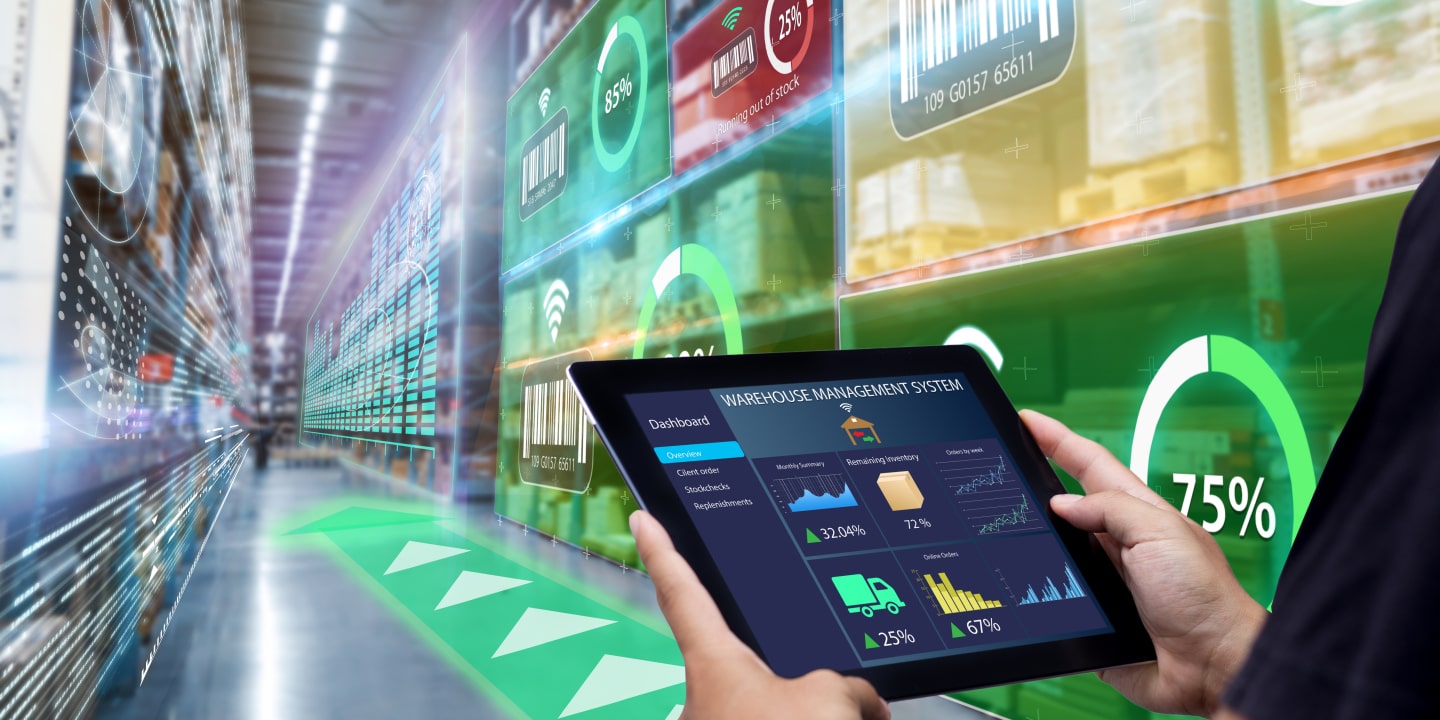Inventory Management Software: Complete Guide

Innovative inventory management is a critical business process that influences the efficiency of supply chains at every juncture. Mistakes in this area can lead to significant issues, including errors during shipping, product shortages, miscommunication with customers, and an elevated risk of theft. Even more concerning is that inaccurate inventory data can drive misguided business decisions, consequences of which can be far graver than extended shipping routes or delivery delays. This underscores the imperative that inventory management in e-commerce companies be impeccable.
According to a review by Statista, over 40% of logistics companies leverage inventory optimization tools to enhance the efficiency and cost-effectiveness of their supply chains, especially when experiencing rapid growth.
The North American inventory management software market is on an upward trajectory, growing at a CAGR of 19.6%. Within this market, the logistics segment is expanding the quickest, with a forecasted CAGR of 20.2% from 2023 to 2030.
In 2022, European countries dominated the IMS market, accounting for 31.49% of global revenue. The Asia-Pacific region is demonstrating remarkable growth in the industry, particularly in China and India.
On the American continent, the USA stands as the undisputed leader in both providing and developing IMS solutions.
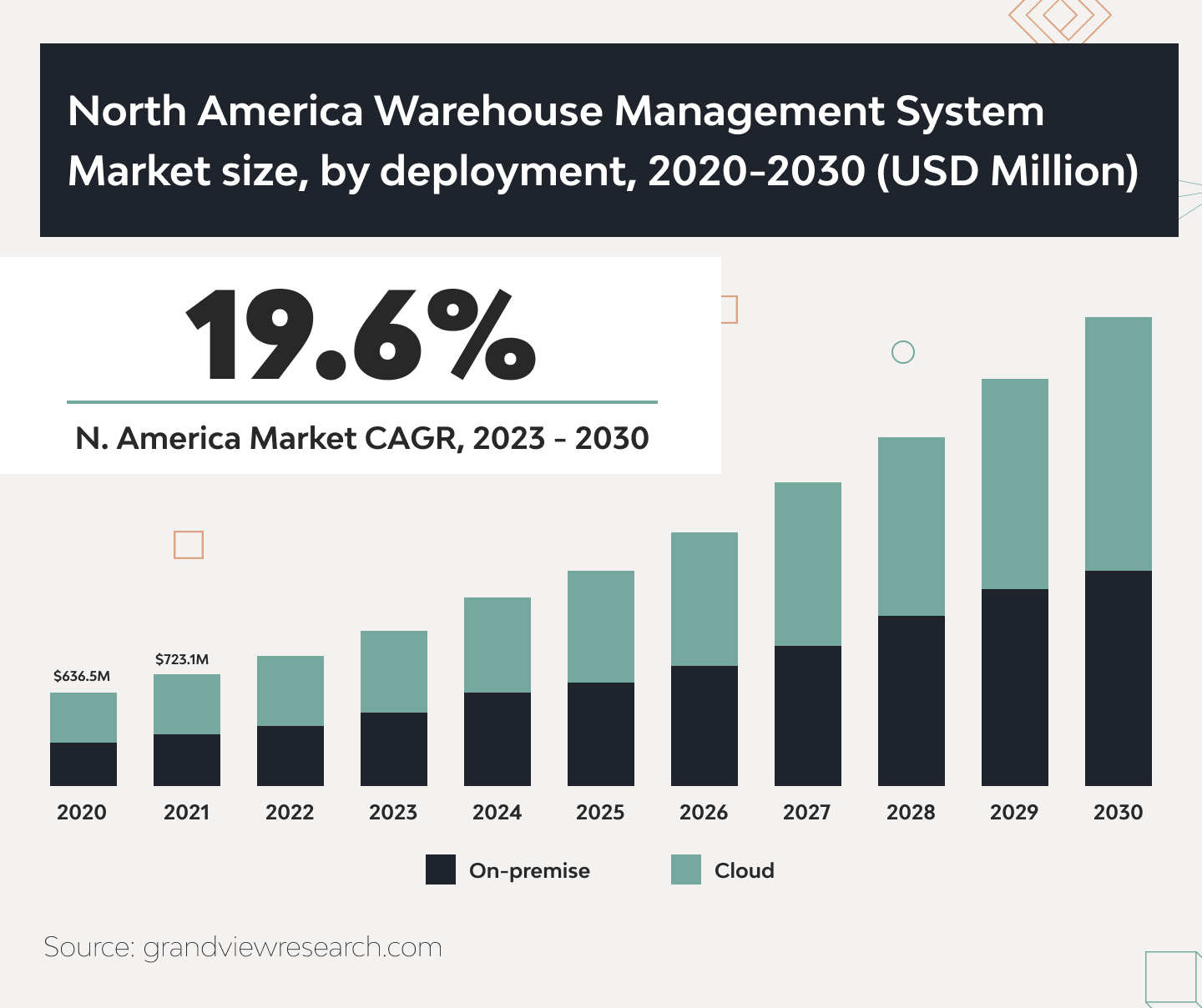
Benefits of using inventory management software
Inventory management software (IMS) helps to improve critical business operations, including real-time ones. It became an indispensable element in the competition of mid-sized and large companies. Let’s look closely at how technologies impact transportation services.
Better planning of supplies
The management system allows for tracking and monitoring the precise product delivery status. A client gets complete information about delivery times and methods, order frequency, packing, billing, and conditions of carriage. If something goes wrong, this will be made known immediately. So, a logistics company will have enough time to diversify the shipping process without negatively impacting the business and reputation.
Increased speed and productivity
Implementing an effective inventory management system can reduce the time and effort required to deliver products. A manager doesn’t have to check all data manually. With a few clicks, a manager would know everything they need about shipping routes and the number of goods available, even for a complicated request. On average, such a system triples the manager’s productivity without additional effort.
Cost-effectiveness
By analyzing client’s demands and shipping patterns, it’s possible to optimize delivery processes by combining different orders. Due to this, a logistics company may lower the delivery prime cost and increase its net income.
It’s possible even to automate the optimization process fully when using AI and neural networks.
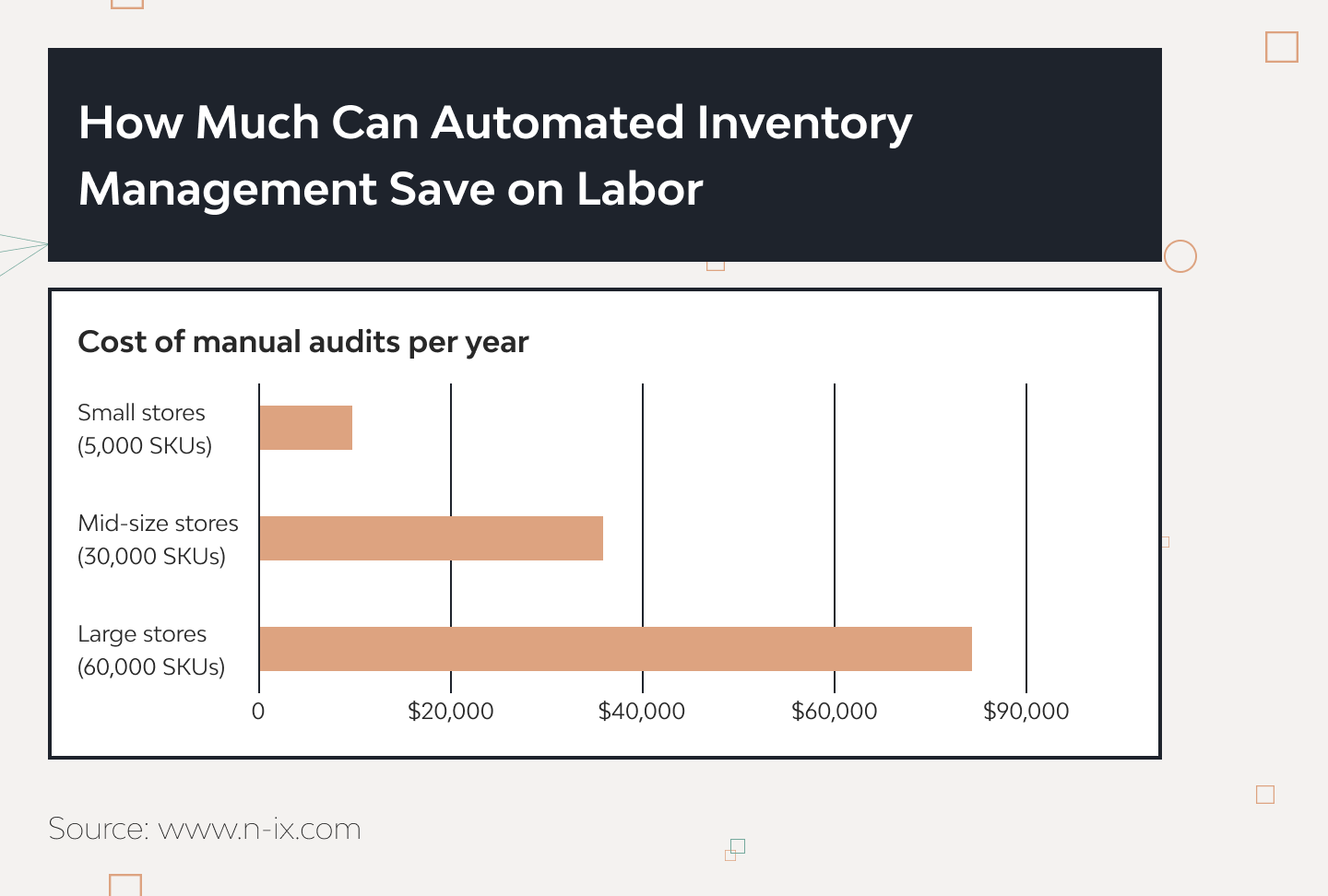
Better trend analysis and demand prediction
An intelligent inventory management system can help analyze seasonal trends and forecast demands. It’s instrumental in organizing long-term freight processes with limited logistics capacities.
Many solutions available on the market already have integrated analytical tools helping to track market demands for particular goods and plan delivery processes more accurately, increasing the company’s business reliability.
Reducing human mistakes
Manual setting up of logistics processes increases the risk of human errors, which may lead to financial and reputational losses. Using inventory management systems prevents basic calculation, updation, and notification mistakes.
Features that Increase the Usability of Inventory Management Software
Inventory management systems are complex tools with many separate features that determine their overall functionality. Here are the most prominent ones that are useful for e-commerce companies:
| Inventory tracking and management | Tools for managing inventory help track and sync data about product cost, availability, SKUs, expiry dates, locations, alternatives, etc. It keeps faster communication with clients who ordered freight services and makes it possible to adapt quickly to any changes. |
|---|---|
| Forecasting and demand planning | This feature helps manage warehouses and keep the required goods in stock. During the high season, it prevents the shortage of products and allows the planned delivery routes to be more accurate in conditions of high load. |
| Real-time visibility and reporting | Inventory management tools enable tracking and controlling goods stored in multiple warehouses to be shipped immediately in real-time. Such features also include transport analytics and tracking. Logistics managers and clients may quickly find out the exact location of an order and its estimated arrival. |
| Inventory alerts | The system tracks the quantity of the available goods at the warehouse and alarms managers to refill them before they get out of stock. Moreover, many inventory management tools can reorder goods when the product amount hits the minimum limit. For logistics companies, it means that they can get fully automated requests to service client’s warehouses. |
| Multi-location support | This feature allows managers to monitor the amount of goods stored in different warehouses and calculate their delivery in such conditions. Moreover, tracking each stage of an order delivery, even from different states, is possible. |
| Integrations with other systems (e.g., POS, ERP) | Inventory management systems are not isolated solutions. They can be easily integrated with ERP, POS, and CRM systems and become a part of the business ecosystem after a short period of software adaptation. |
Inventory management tools can be used as a management feature to monitor goods in warehouses and on the way to clients or as an essential part of the logistics ecosystem. It depends on how to set them up and organize the working process.
Steps to Developing Inventory Management Software
Implementing an inventory system can revolutionize inventory operations within logistics. Here’s a typical sequence for setting up a comprehensive inventory management solution:
Step 1. Define the Necessary Features
Gather as much information as possible. Determine which application aligns best with your company: a point feature, an integrated solution, or a complete logistics administration system. For instance, if you aim to automate dropshipping tasks and optimize inventory in both FBA and WFS, yet don’t require manufacturing features, a targeted solution might be best. Avoid overestimating needs – for a small logistics company, an expansive solution tailored for international giants might be overkill. Switching from a point solution to a comprehensive ecosystem is strategic, but ensure staff are adequately trained for the transition.
Step 2. Identify the Right Inventory Management Model
Decide between an off-the-shelf solution or bespoke software. Custom software is mainly for companies with unique processes. Roughly 95% of e-commerce businesses can find a suitable pre-existing solution. While off-the-shelf solutions may cost between $100 and $1000 monthly, custom development is significantly pricier. Before deciding:
- Decompose and analyze all business operations that the IMS should enhance.
- Identify processes ripe for automation, such as route optimization and demand forecasting.
Step 3. Select a Solution
Researching available solutions may take a month or more. While there are numerous options available, prioritize a system’s scalability, ensuring it can accommodate growth.
Step 4. Decide on Deployment Method
Determine whether to deploy in-house or outsource. As per Zippia research, 66% of US businesses outsource at least one function. Although in-house development offers flexibility, outsourcing often proves optimal for many logistics companies.
Step 5. Deploy the Chosen Solution
If outsourcing, oversee the terms of the development process. Crucially, ensure your team knows how to use the new software. Many vendors provide training sessions—capitalize on these.
Step 6. Thoroughly Test
Once developed, test all functions for alignment with specifications. This process, ranging from weeks to months, ensures the software is commercially ready after successful validation.
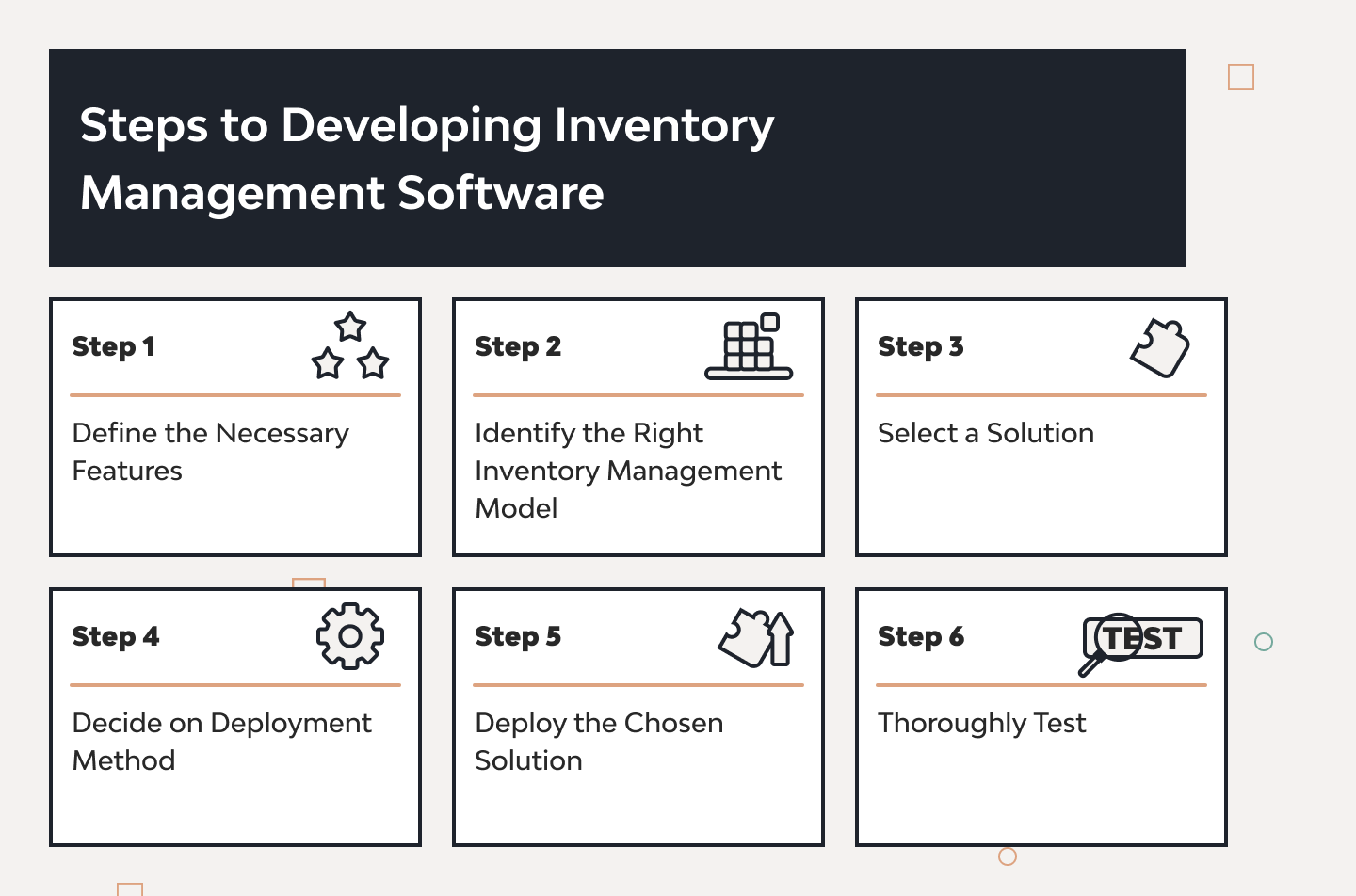
The Best Inventory Management System: The Choice of Django Stars
Ready-made inventory management systems suit eight of ten e-commerce companies, even the international ones.
Django Stars’s experts have already analyzed the IMS market, including data available on Capterra, G2, and Trustpilot, and picked three of the most convenient and valuable solutions for a logistics company:
Katana
Forbes Advisor rating: 4.8 of 5.
Pricing: from $99 to $599 monthly.
Katana is a full-scale system for order tracking, inventory management, and delivery route monitoring. It has many features useful for e-commerce or B2B business: goods manufacturing, warehousing, and logistics.
Pros:
- Reasonable pricing.
- Highly customizable solutions.
- Time-saving tracking features.
- Free 14-day trial.
Cons:
- It may be expensive for international business.
- No phone support.
Ordoro
Forbes Advisor rating: 4.9 of 5.
Pricing: from $59 to $149 monthly.
Ordoro is a complex solution that includes supply chain management, multichannel sales, warehouse management, and shipping. Each Ordoro feature may be integrated with most e-commerce stores and online marketplaces.
The system is highly automated: it can even forward orders from several warehouses and find the best routes with a few clicks. Ordoro provides convenient features to analyze and forecast the shipping process and has an extensive online knowledge base.
Pros:
- Top-level service integration with other e-commerce and marketplace systems.
- Automated warehouse and shipping management
- Built-in features for analysis and forecasting.
Cons:
- Full-scale solutions are pricey.
- No mobile app.
Cin7
Forbes Advisor rating: 5 of 5.
Pricing: from $325 monthly.
Cin7 is a top-notch management tool for all aspects of e-commerce: inventory tracking, warehouse monitoring, and shipping management. It’s highly customizable and flexible so that it may be used as well as a single-point solution or an infinitely scalable turn-keye-commerce system.
It’s especially recommended for ambitious sellers and logistics companies who want to automate all internal business processes.
Pros:
- It may be integrated with the most significant marketplaces and shipping platforms.
- High level of automatization.
- Unlimited scalability and flexibility.
Cons:
- It’s pricey, especially when adding users.
- There is only chat client support.
Forbes Advisor created its rating for the top inventory management software. There, you can find the best systems for small and big manufacturers, sellers and logistics companies, point or full-fledged services, and even very niche solutions. Read it to learn more.
Implementing and Customizing an IMS: How to Properly Outsource It
Here is the step-by-step guide about how to find a solid and well-coordinated outsourcing team to delegate all the work with IMS.
Explore outsourcing teams from all around the world. Outsourcing the development and deploying the inventory solution is fine, but first, you must choose the team. We recommend seeking experts not only in your country but also abroad.
In the chart below, we have the data about development technologies popular in every region.
The more technologies used in your chosen solution are there, the more likely you are to find a team that can help you in ISM development.
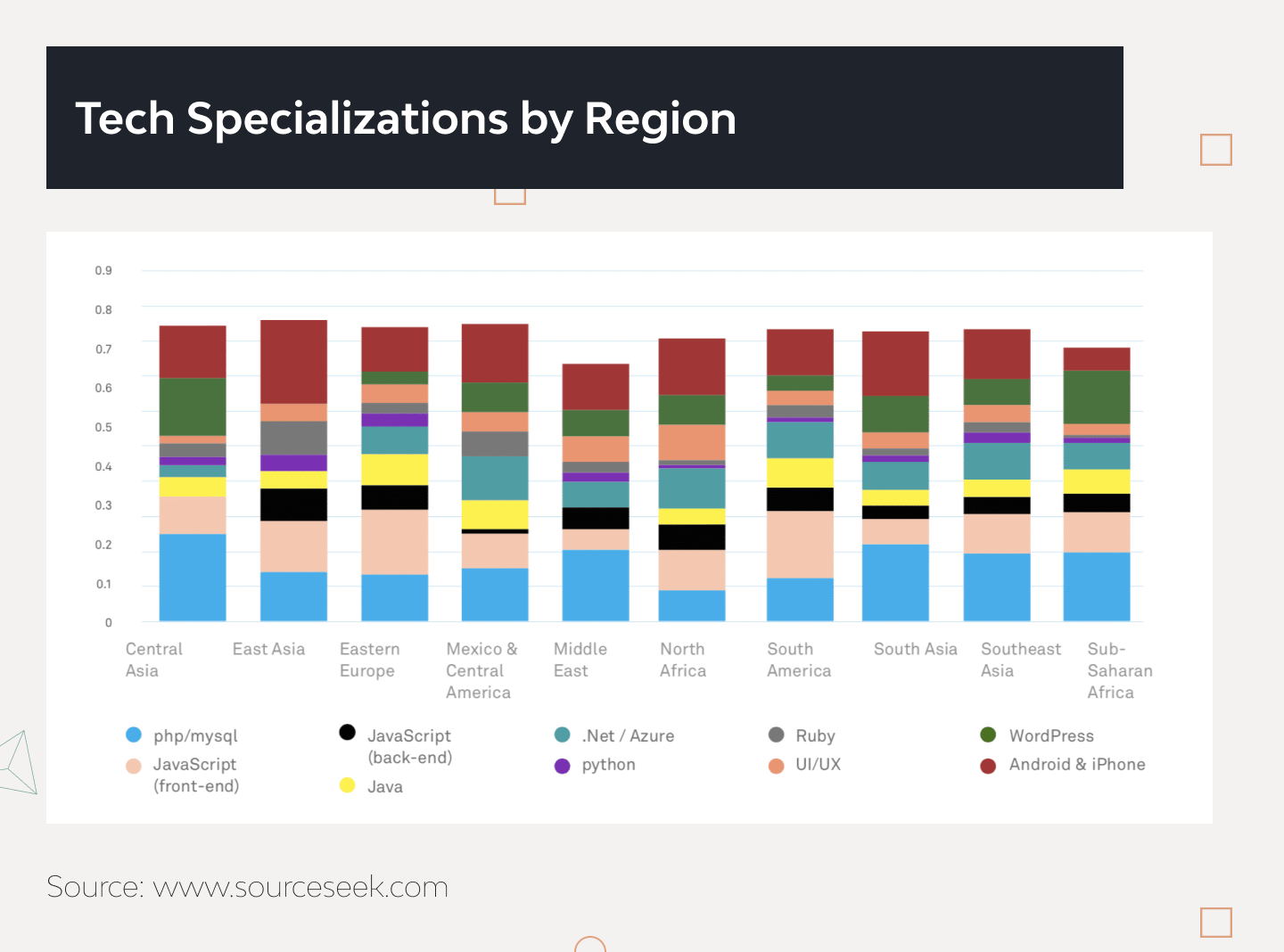
Sometimes, hiring a team with solid experience in required technologies is better, even if they are far abroad.
Evaluate the technical expertise of contractors. Analyze your company’s goals and the technologies already used.
For example, Django Stars uses Python as our primary programming language and has deep expertise across every aspect of product development with its frameworks and tools.
Moreover, we have lots of successful solutions designed in different areas of business: booking, video streaming platforms, SaaS development, CRM and ERP systems, high-load applications, and more.
We have all the required skills and knowledge to design and develop any inventory management solution you need, from small-point solutions for solving a single specific task to full-fledged systems for an international e-commerce company.
Choose a contractor with a decent portfolio. Looking through successful IT product development is the best way to check a prospective vendor. Also, we recommend starting cooperation with the discovery phase and discussing the concept of the ecosystem you require.
Inventory management software can be used as a standalone solution for solving a specific task in logistics or as a part of a full-fledged ecosystem, including everything you need to lead any e-commerce business.
- How can an inventory management system help an e-commerce business?
- IMS is designed to solve business tasks related to goods storing, warehouse management, and delivery optimization. When the data is collected correctly, the system prevents human mistakes when choosing routes and optimizes the delivery process. It’s a handy tool for improving logistics on the financial and reputational sides.
- Is inventory management software suitable for small businesses or only for large enterprises?
- IMS solutions are suitable for both small companies and international holdings. Most of them are flexible and scalable, so they can solve small logistics tasks and control the entire process performance of an e-commerce company.
- How does inventory management software work?
IMS tools track all stages of goods sale and delivery: inventory levels, confirmed orders, shipping routes, and statuses. It also may be used for monitoring product manufacturing and warehousing.
For logistics companies, inventory management software helps optimize delivery processes, such as finding more efficient shipping strategies, forecasting seasonal demand growth, goods delivery in different ways and from several warehouses, etc.
- How secure is the data stored in inventory management software?
- Providers of IMS solutions use data encryption and protected data centers to ensure safe data storage and operation. On the technical side, your data will be secured.


